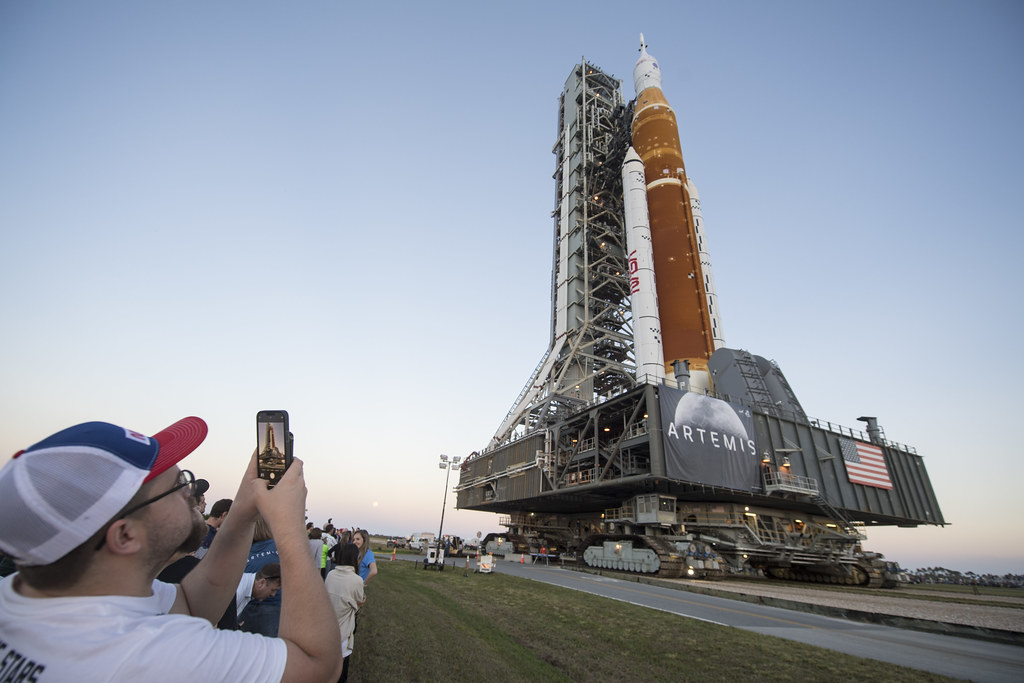Artemis III SLS Launch: Final ICPS Arrives in Florida
United Launch Alliance (ULA) has delivered the last-ever Space Launch System (SLS) Interim Cryogenic Propulsion Stage (ICPS) from its Decatur, Alabama, factory to Cape Canaveral Space Force Station (CCSFS) for eventual use on the Artemis III lunar landing mission. ICPS-3 is also the last Delta hardware to leave Decatur and will support NASA’s third and final launch of the SLS Block 1 rocket before it’s upgraded to the Block 1B configuration.
The ICPS stage will remain in storage at ULA’s CCSFS facilities until NASA is ready to fly Artemis III, which is targeted for the end of 2025 but is expected to be delayed until 2026 or later. In the meantime, ULA and SLS teams will prepare ICPS-2 to be stacked for the Artemis II circumlunar test flight next year.
ICPS-3 was transported to CCSFS from the Decatur plant using ULA’s seagoing cargo ship, R/S RocketShip. It was then offloaded and taken to ULA’s Horizontal Integration Facility (HIF). The stage will remain in the HIF until it’s ready to be moved to ULA’s Delta Ops Center (DOC). The HIF allows for inspections and testing of the stage if necessary.
The ICPS is an in-space stage used in the SLS Block 1 vehicle design to transport payloads out of low Earth orbits. It’s similar to the Delta Cryogenic Second Stage (DCSS) used on the Delta IV vehicle, with some modifications specific to Orion spacecraft interfaces. ICPS-3 is likely to be the last Delta IV stage to fly and will remain in storage until after the last planned Delta IV flight hardware is tested in the DOC.
Once NASA is ready to fly Artemis III, ICPS-3 will be moved to the Multi-Payload Processing Facility (MPPF) at Kennedy Space Center (KSC) where the attitude control system hydrazine bottles will be loaded. The stage will then be transported to the Vehicle Assembly Building (VAB) to be stacked with the SLS.
ICPS-2, which will be used for Artemis II, has already been prepared for the launch campaign. It has undergone testing and checkout in the DOC and is now in storage, waiting for Artemis II vehicle stacking.
During testing in the DOC, the RL10 engine nozzle extension and flight computers were installed on ICPS-2. The stage went through various tests, including extending the nozzle and conducting engine maneuvers. The stage’s flight computer and emergency detection system were also installed.
ICPS-2 has undergone crew-rating modifications, including adding shielding to reduce the risk of micrometeoroid and orbital debris impacts. The risk of such impacts will be minimized by flying a specific trajectory for Artemis II.
ICPS-2 also has a rendezvous target installed for Orion proximity operations and handling qualities demonstration. When Orion separates from ICPS, it leaves behind the Spacecraft Adapter cone and Orion Stage Adapter, which will be used by the crew during their approach to the stage.
ULA’s Delta Operations Center (DOC) has a storage cell that was converted specifically for SLS. ICPS-2 is currently stored in this cell, and ICPS-3 will also be stored there when it’s finished.
The Block 1 adapters for Artemis II and III, including the Launch Vehicle Stage Adapter (LVSA) and Orion Stage Adapter (OSA), are being completed at Marshall Space Flight Center (MSFC). LVSA-2 is finished and in storage at MSFC, ready to be shipped to Florida. LVSA-3 is undergoing final integration of separation hardware. The OSA for Artemis II is also nearing completion, with the integration of secondary payloads and avionics units.
The SPIE element within the SLS program provides data products and analysis to support the Orion program and the Flight Operations Directorate (FOD) at Johnson Space Center. They provide scenarios of in-space anomalies for training the crew and console operators at MCC. SPIE also supports the flight analysis cycle for Artemis II, calculating launch periods for the mission.
Overall, ULA and SLS teams are making progress in preparing the ICPS stages for Artemis II and III. The stages are being stored and undergo testing and checkout before being transported to the launch site for stacking with the SLS. The completion of Block 1 adapters is also underway, ensuring that all components are ready for the upcoming Artemis missions.
